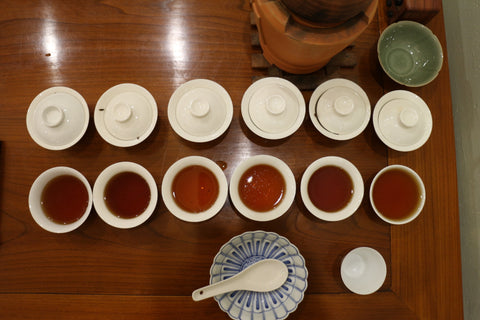The First Two Days in Shanghai
Shanghai, 14th April 2018
Cold and gloomy weather welcomes me to Shanghai. I'll stay in the city for a couple of days to reacclimatise to China and sample the teas I have had sent to me from various producers. My time in China is both little and precious; accordingly, every year I ask some producers to send a first round of samples to Shanghai.
I start with a Tieguanyin from a new contact, a little company in Anxi. At the table are Qin, proprietress of two tea shops in Shanghai, and Benjamin, a dear German friend of mine who is also visiting China. Delicate, floral, neither too green (too lightly oxidised), nor acidic (as is common in Tieguanyins), the three teas are quite similar, even if one is slightly duller than the others. The prices, as I'll discover tomorrow, are more than reasonable and the least expensive of the three is the one we like the most. In fact, prices are determined by the date of plucking: more expensive for tea harvested at the beginning of the season, but the first teas are not always the best. I hope I can manage to visit the company when I visit Anxi two weeks from now.
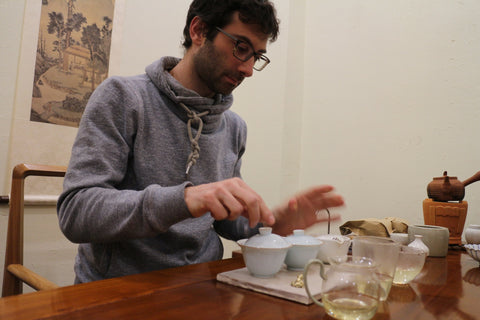
Tieguanyin tasting.
It is already dinnertime. Qin uses a new app to order food. The concept is similar to Airbnb, only that instead of rooms, families offer meals made-to-order and delivered in person. The cook even calls us during dinner to know if we are enjoying it.
Dinner with friends.
We were also joined at dinner by Weiwei, who brought with her several Qimen Hong Chas sent to her by three families from the village where she grew up, all already suppliers for Nannuoshan. We tasted all the teas, one after another. One convinces me more than the others, but the comparison is difficult for me, perhaps due to fatigue. After everything tonight, the plane ride, and having barely slept, the jet lag is beginning to make itself felt. Time to make my way to the hotel.
Shanghai, 15th April 2018
After having bought a tripod and power bank, which I had forgotten in Europe, I return to Qin's shop to taste the Qi Hong again. I also purchase ten gaiwans to try all of the teas together. Six teas, three producers, two different shapes: needle-shaped Maofeng and Qi Mei, and spiral-wound Xiang Luo leaves.
Today, the comparison is much simpler. A blind tasting. I decide immediately against some of the teas, and even between the two remaining ones, the choice isn't difficult. I check the name on the wrapping: it's the same one which won me over yesterday; choice made, ordered!
The tea convinced me by being soft and well-balanced, but not at all lacking in character, the flavour delicately toasty, thanks to a wok-frying, and with a light aftertaste of lemon.
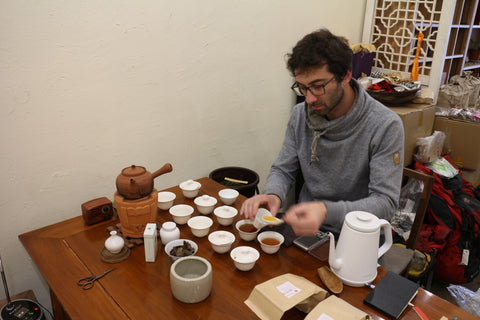
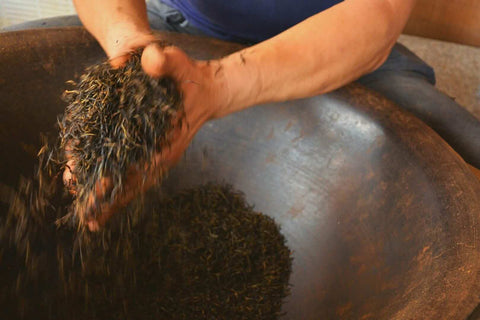

Above: tasting of six Qimen Hong Cha.
Below: treatment of Qi Hong by wok and landscape around the plantation (photo by Weiwei, March 2018)
I continue with the teas from two larger companies, both exporters. They are truly awful. Green tea bitter and flat; two yellows vaguely acceptable, but very expensive; a nauseating smoked Lapsang Souchong: a tasting to forget—I move on to the Pu'er.
Two Shu Pu'er with different characters, but produced by the same company, Guanzhi Zhai. The first, my favourite, is really soft on the palate, even when steeped for a long time, and comes from a 2006 cake from Mengku (Lingang). The second tea comes from Xin Mane (Bulang, Menghai), and is made of a mixture of three different vintages: 2007, 2012, and 2017. The leaves are lighter than the first, but the brew becomes black after infusing for just a couple seconds, with an intense flavour, liqueur-like, and a bit pungent. I buy a couple of both, as well as two Tong of a Bing Dao which I had bought a cake of for myself last year.
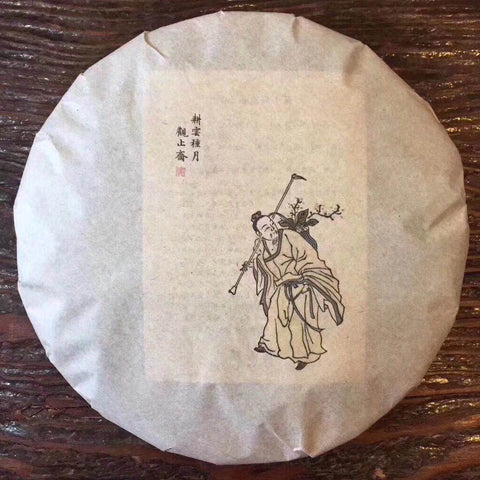
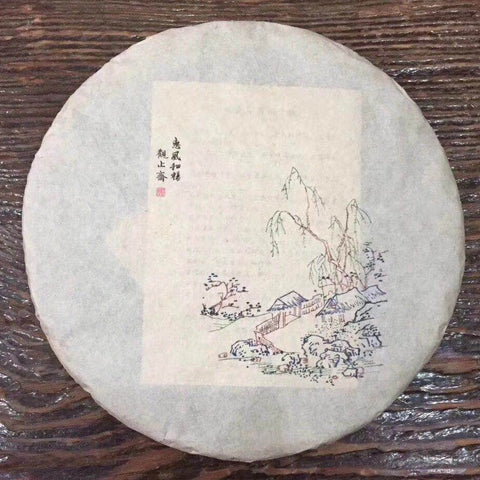
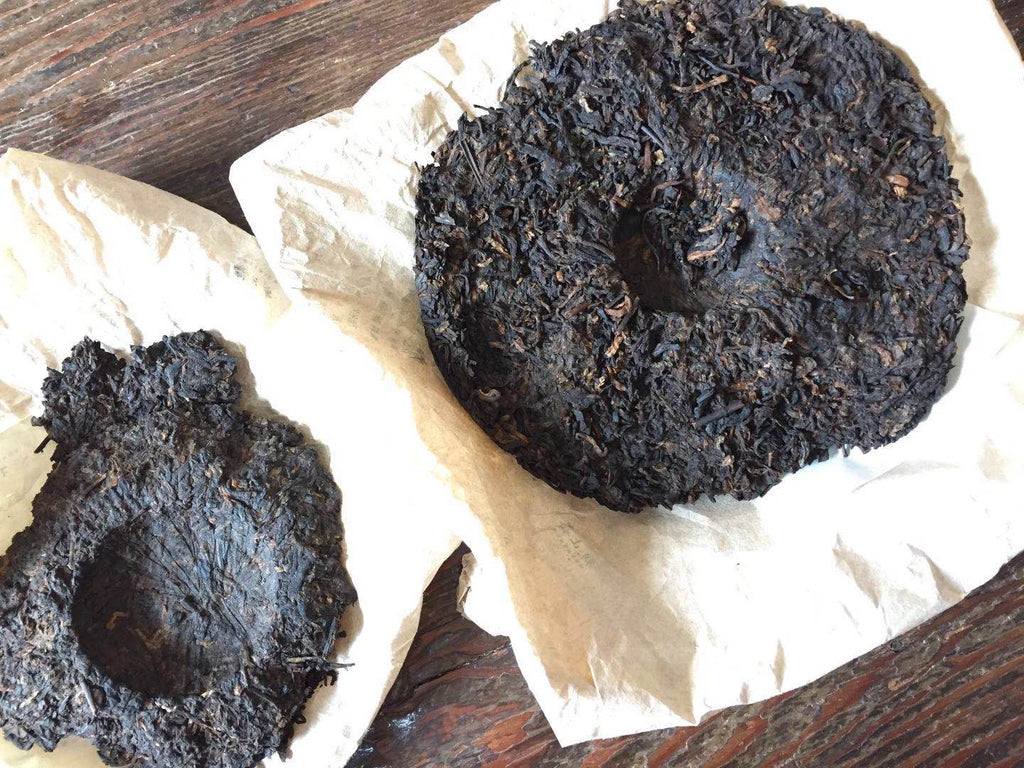
Left: soft Shu Pu'er, 2006, Mengku (Lincang).
Right: intense Shu Pu'er, blended 2007, 2012, 2017, Xin Mane (Bulang, Menghai)
Tomorrow I set out for Changxing, which has, for over a millennium, produced Guzhu Zi Sun (Guzhu purple bamboo shoots), a famous green tea, already well-known during the Tang dynasty and mentioned by Lu Yu.
Written by Gabriele








